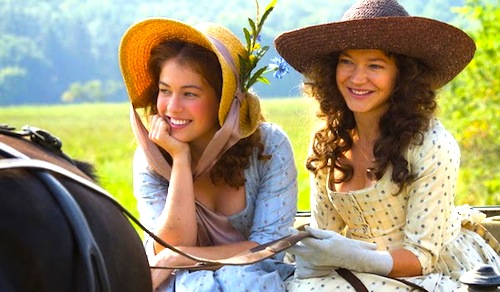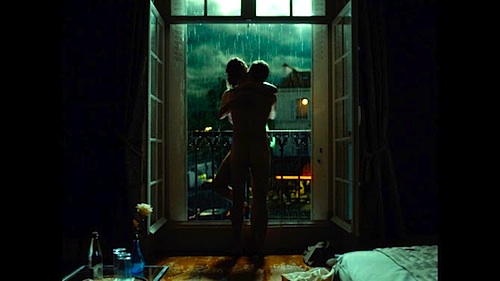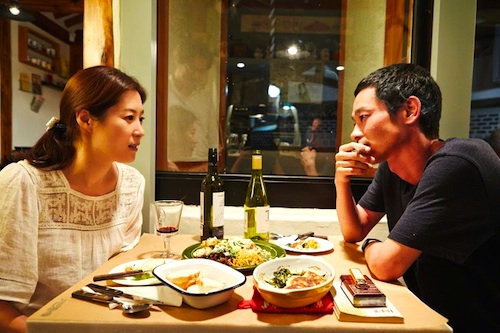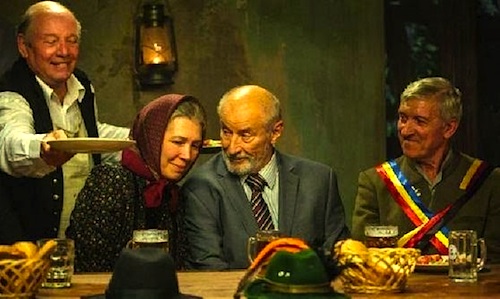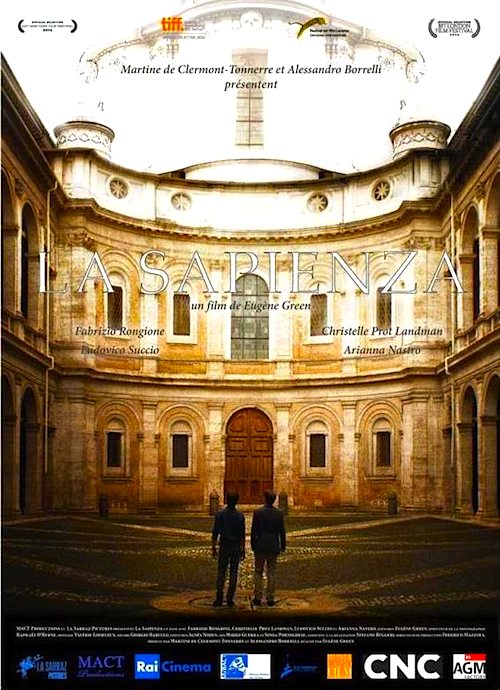By Joe Bendel. Nick Dunne looks the part of a Scott Peterson surrogate, but he is probably not guilty of murdering his wife, Amy. Probably. Nonetheless, nobody would call him innocent. Frankly, that is true of everyone involved in this sordid affair, but that does not stop the wolf-pack media from anointing victims and villains in David Fincher’s Gone Girl, the opening night film of the 52nd New York Film Festival.
It does not take very long to find the cracks and strains in the Dunnes’ marriage. A great deal of it involves money. Since both were laid off, they have had to rely on her much depleted trust fund. There are other issues as well, which will be revealed over time, but with varying degrees of credibility. Regardless, it is perfectly logical for the police to initially suspect Dunne when his wife disappears under mysterious circumstances. When they discover large pools of her blood have been freshly scrubbed from the Dunnes’ kitchen floor, the noose tightens. However, a number of game-changing shoes will drop in the second and third acts.
Adapting her own novel, first-time screenwriter Gillian Flynn is unusually adept at maintaining the unreliable narration and related narrative devices that are often sacrificed in page to screen transfers. Still, some things are crystal clear, such as her withering contempt for the baying media hounds. Missi Pyle plays a character named Ellen Abbott, but she might as well wear a name tag that says: “hello, my name is Nancy Grace.” It is not a flattering portrayal.
However, the depiction of marriage is just as jaundiced. While it might sound like some sort of “the stranger I married” Lifetime movie (a genre unto themselves that drew a snarky comment or two at the NYFF presser), the film really hinges on just how well the Dunnes know each other.
Rosamund Pike was very good in Barney’s Version and unjustly overlooked in Jack Reacher, but she takes her craft to a new level as Amy Dunne. For reasons that would be spoilery to explain, it is a physically and emotionally rigorous performance that brings to mind Bette Davis at her most noir (and that is not suggested lightly). Tyler Perry (yes, that Tyler Perry) is nearly as great a surprise, killing it as Dunne’s lawyer, Tanner Bolt (cool name). He deliberately refrains from channeling well known celebrity attorneys, but he projects the intelligence and charisma you would dearly want in a defense attorney.
Poor Ben Affleck took some Batman ribbing in stride at the press conference, but he is solidly good to very good as the highly flawed Nick Dunne. Neil Patrick Harris also has his moments as Desi Collings, Amy’s well heeled, but decidedly squirrely ex-boyfriend and possibly stalker. Nevertheless, it is hard for those who share the screen with Pike’s Dunne to get out of her dominating shadow.

Gone Girl is definitely a rebound film for Fincher after the completely unnecessary and largely uninspired Girl with the Dragon Tattoo remake, but it still does not have the distinctive auteurist stamp of films like Fight Club and Se7en. Arguably, this is more of a writer and actor’s vehicle. Even though she does not exactly mirror the structure of her source novel, Flynn’s screenplay is still cleverly constructed, even though she allows the endgame to drag out a bit, rubbing our noses in the story’s implications.
Unfortunately, the film is probably too dark, too thrillerish, and far too morally ambiguous to garner much Oscar love, with the notable exception of Pike, who deserves to be in contention for best actress. For the rest of us civilians, it is quite a good suspenser. Recommended for fans of mainstream film noir, Gone Girl kicked off this year’s NYFF last night at Alice Tully Hall, in advance of its October 3rd opening.
LFM GRADE: A-
Posted on September 30th, 2014 at 10:08pm.
